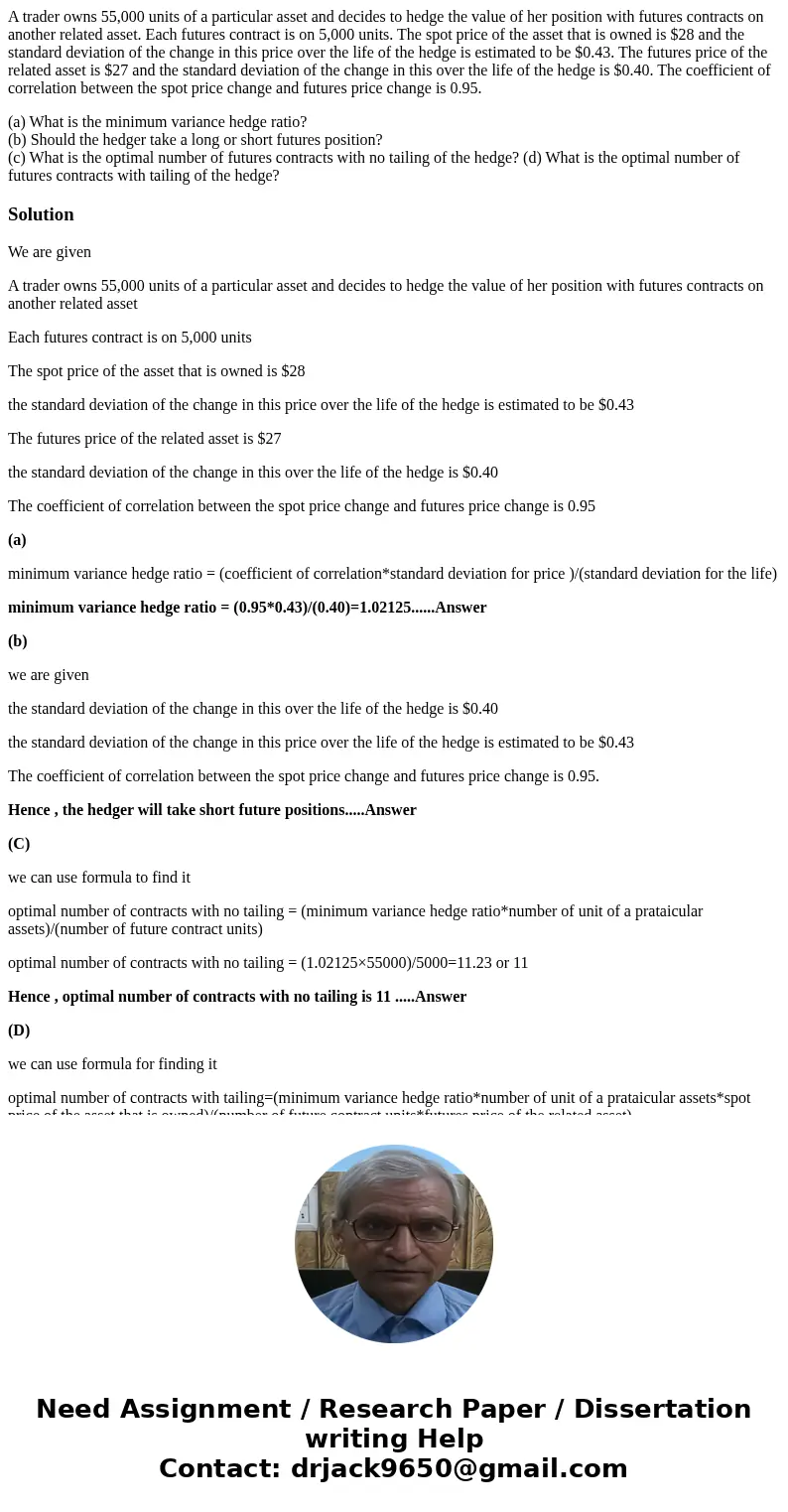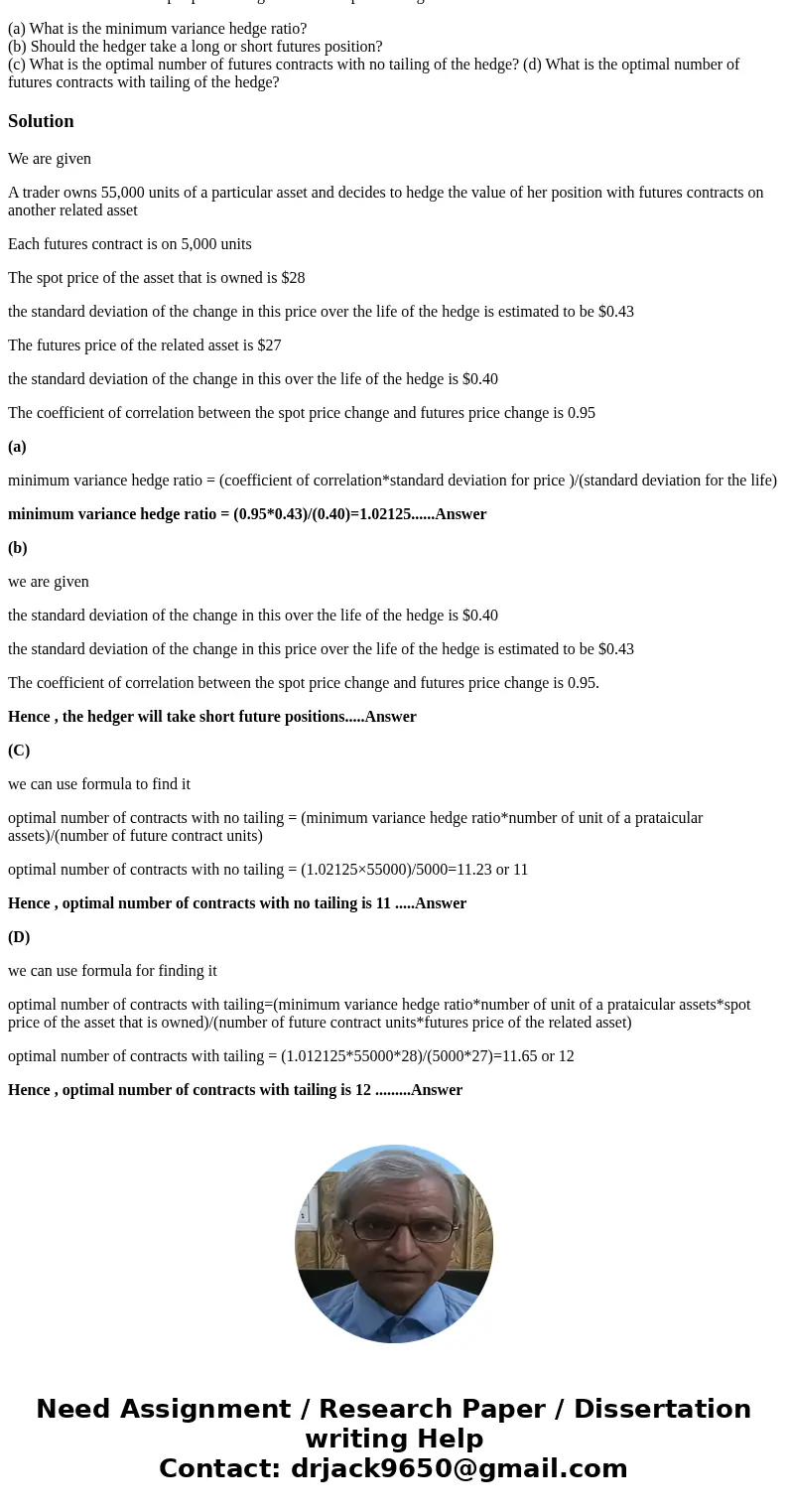A trader owns 55000 units of a particular asset and decides
A trader owns 55,000 units of a particular asset and decides to hedge the value of her position with futures contracts on another related asset. Each futures contract is on 5,000 units. The spot price of the asset that is owned is $28 and the standard deviation of the change in this price over the life of the hedge is estimated to be $0.43. The futures price of the related asset is $27 and the standard deviation of the change in this over the life of the hedge is $0.40. The coefficient of correlation between the spot price change and futures price change is 0.95.
(a) What is the minimum variance hedge ratio?
(b) Should the hedger take a long or short futures position?
(c) What is the optimal number of futures contracts with no tailing of the hedge? (d) What is the optimal number of futures contracts with tailing of the hedge?
Solution
We are given
A trader owns 55,000 units of a particular asset and decides to hedge the value of her position with futures contracts on another related asset
Each futures contract is on 5,000 units
The spot price of the asset that is owned is $28
the standard deviation of the change in this price over the life of the hedge is estimated to be $0.43
The futures price of the related asset is $27
the standard deviation of the change in this over the life of the hedge is $0.40
The coefficient of correlation between the spot price change and futures price change is 0.95
(a)
minimum variance hedge ratio = (coefficient of correlation*standard deviation for price )/(standard deviation for the life)
minimum variance hedge ratio = (0.95*0.43)/(0.40)=1.02125......Answer
(b)
we are given
the standard deviation of the change in this over the life of the hedge is $0.40
the standard deviation of the change in this price over the life of the hedge is estimated to be $0.43
The coefficient of correlation between the spot price change and futures price change is 0.95.
Hence , the hedger will take short future positions.....Answer
(C)
we can use formula to find it
optimal number of contracts with no tailing = (minimum variance hedge ratio*number of unit of a prataicular assets)/(number of future contract units)
optimal number of contracts with no tailing = (1.02125×55000)/5000=11.23 or 11
Hence , optimal number of contracts with no tailing is 11 .....Answer
(D)
we can use formula for finding it
optimal number of contracts with tailing=(minimum variance hedge ratio*number of unit of a prataicular assets*spot price of the asset that is owned)/(number of future contract units*futures price of the related asset)
optimal number of contracts with tailing = (1.012125*55000*28)/(5000*27)=11.65 or 12
Hence , optimal number of contracts with tailing is 12 .........Answer


 Homework Sourse
Homework Sourse